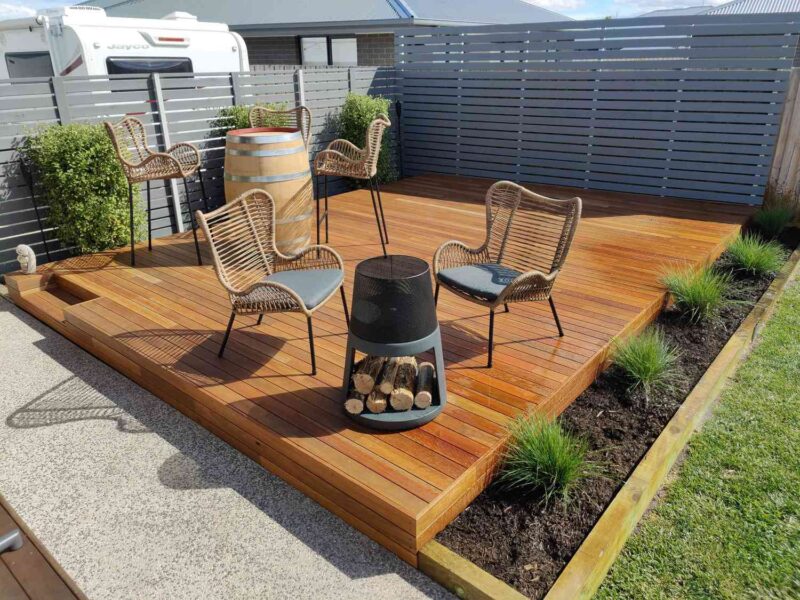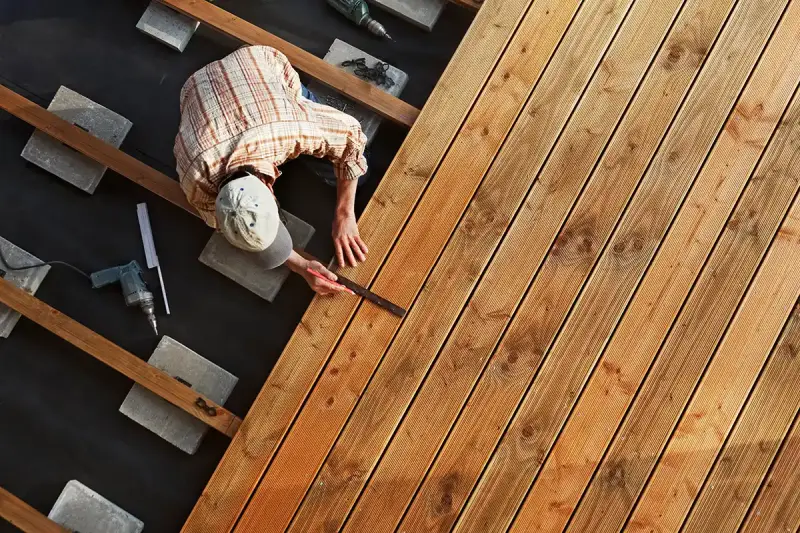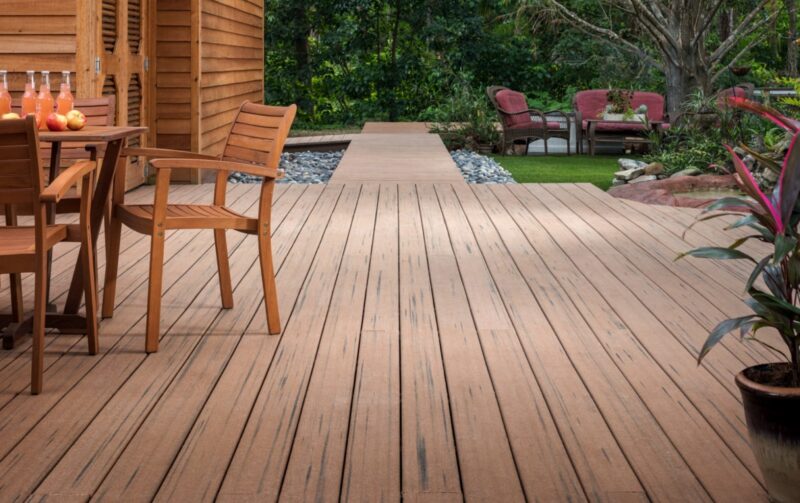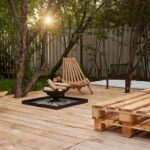Building a floating deck can transform your outdoor living space, offering a cozy retreat for relaxation and entertainment. Unlike traditional decks, floating versions are not anchored to the ground or a building, making them a versatile and appealing option for many homeowners. This comprehensive guide will walk you through the process, from planning to maintenance, ensuring your project is a success.
Planning Your Floating Deck: Key Considerations

Before diving into construction, thoughtful planning is crucial. Consider the purpose of your deck—will it be a quiet reading nook, a space for large gatherings, or something in between? The size of the deck should accommodate its intended use, while also fitting comfortably within your yard’s layout. Think about sun exposure, privacy, and proximity to your home. Planning also involves setting a budget, which will influence your choices of materials and design features. Remember, good planning is the foundation of a successful project.
Choosing the Right Location: Where to Build Your Floating Deck
Selecting the right location for your floating platform is pivotal. Look for a level area to minimize groundwork. If you’re drawn to a particular spot because of its view or privacy, consider how the deck’s placement will affect these elements. Avoid areas with underground utilities or large tree roots, which can complicate construction. Additionally, consider the path of the sun throughout the day; a spot that enjoys morning light but is shaded during the hottest part of the afternoon is ideal for many.
Understanding Local Building Codes and Regulations
Before beginning your project, familiarize yourself with local building codes and regulations. These rules can affect the size, height, and location of your deck. Obtaining the necessary permits is essential to ensure your platform is legal and safe. This step might seem tedious, but it’s crucial for avoiding potential fines and ensuring your deck’s longevity and safety. It’s also a good time to discuss your plans with neighbors to prevent any disputes. To better understand entire process and all steps you should check out https://decksforlife.ca/.
Selecting the Materials: Decking Options and Structural Components

The choice of materials will significantly impact the appearance, durability, and maintenance requirements of your floating patio. Pressure-treated lumber is a popular, budget-friendly option, while composite decking offers a low-maintenance alternative with a longer lifespan. Consider the climate in your area when selecting materials; some may weather better than others. For the structural components, ensure you use materials rated for outdoor use to prevent decay and increase the longevity of your platform.
Preparing the Ground: Site Preparation for a Stable Foundation
A stable foundation is key to the longevity of your floating deck. Start by clearing the site of vegetation, rocks, and debris. Level the ground as much as possible to avoid future shifting. For grassy areas, consider removing the sod to prevent organic material from decomposing under your platform. Use landscape fabric and gravel to create a barrier against weeds and moisture. Proper ground preparation helps prevent settling and ensures a stable base for your patio.
Building a Solid Frame: Essential Steps and Techniques
The frame is the skeleton of your floating deck, providing structure and support. Begin by laying out the outer frame, ensuring it’s square by measuring diagonally between opposite corners. Use joist hangers and galvanized screws or bolts for connections to add strength. Space the joists evenly for uniform support, and remember to include blocking between joists in long spans for additional stability. A well-constructed frame is critical for a durable and safe platform.
Ensuring Proper Drainage: Preventing Water Damage and Rot

Water is the enemy of wooden structures, making proper drainage a critical aspect of floating deck construction. Ensure your platform is slightly sloped away from your house to prevent water pooling. Use spacers between the decking boards to allow water to drain and air to circulate, reducing the risk of rot and mold. Consider installing a gutter system on your deck to manage rainwater effectively, especially if your patio covers a usable space underneath.
Installing Decking Boards: Tips for a Professional Finish
Installing the decking boards is where your project really starts to take shape. Begin at one edge and work your way across, ensuring each board is straight and evenly spaced. Use a hidden fastening system for a clean look, or if using screws, pre-drill holes to prevent splitting. Stagger the joints for aesthetic appeal and structural integrity. Taking your time during this step will result in a professional-looking finish that you’ll be proud to show off.
Adding Railing and Safety Features: Aesthetic and Functional Considerations
If your floating platform is elevated, adding railing is essential for safety and can also enhance the deck’s overall appearance. Choose a railing style that complements your home’s exterior and the deck’s design. Ensure the railing is securely attached and meets local building codes for height and spacing. Additionally, consider adding built-in seating or planters to integrate functionality and style seamlessly.
Finishing Touches: Staining, Sealing, and Deck Maintenance

Protecting your deck from the elements will extend its life and maintain its beauty. Apply a high-quality stain or sealant to guard against water damage, UV rays, and wear. Regular maintenance, including cleaning and inspecting for any signs of damage, will keep your patio safe and inviting for years to come. Plan to reseal or restain your deck every few years, depending on exposure and wear.
Enhancing Your Deck with Lighting and Accessories
Lighting can transform your floating deck into an enchanting evening retreat. Consider solar or low-voltage LED lights for energy efficiency. Patio post lights, string lights, and even in-floor lighting can add ambiance and improve safety. Accessories like outdoor rugs, furniture, and planters will personalize your space, making it an extension of your home.
Enjoying Your Floating Deck: Maintenance and Long-Term Care
With your floating deck complete, regular maintenance is key to enjoying it for years to come. Inspect your platform annually for loose boards, protruding nails, or signs of rot. Clean it regularly to prevent buildup of dirt and debris. By taking care of your deck, you’ll ensure it remains a safe, comfortable, and beautiful space for outdoor living.
Building a floating deck requires careful planning, hard work, and attention to detail. By following these steps and tips, you can create a stunning outdoor space that enhances your home and lifestyle. Whether you’re enjoying quiet mornings alone or hosting lively gatherings, your floating platform will be a cherished addition to your home.







